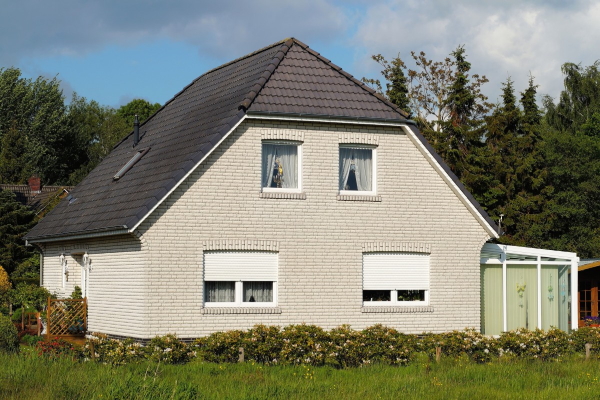
Most homeowners have roofing concerns. True enough, 50% of your residential curb appeal comes from your roof. As reliable roofing contractors in South Windsor CT, we can confirm we get more inquiries about roof repair than anything else. However, homeowners must consider having siding inspections for possible siding repairs or replacements as well.
It might seem inconsequential, but siding makes up the next 50% or even 80% of your residential curb appeal. While your roof shows off the amazing crowning glory of your property, it is your siding that most people see on a daily basis. It's analogy is similar to a haircut; 50% of it is noticeable for many people, but most would always notice the clothes you wear on a daily basis.
Therefore, it makes sense to have exceptional siding conditions for your property too. While siding inspections are simpler and easier tasks if you compare it to roofing that requires you to go up a ladder, it still requires some meticulous attention to detail. Here are everything you need to know to perform exceptional siding inspections.
Vinyl siding is the most typical and affordable siding for many South Windsor CT properties. We can't blame homeowners because it is exceptionally beautiful especially when it is clean and pristine. In addition, you have a huge variety of colors to choose from -- and you'll definitely find the best one for your property in no time.
While InterNACHI's guide is mostly about inspecting vinyl siding, the principles they discuss below is still significant for any kind of siding inspection. Read more about it below.
Tips for Inspecting Vinyl Siding
Some of these details may be observed while inspecting the exterior of a house, depending on whether the vinyl siding has already been installed or is in the process of being installed:
Ripples in the siding can result from stapling or nailing through the face of the siding, which is an incorrect installation.
Caulk is not necessary in spots where panels meet the receiver of inside corners, outside corners or J-trim. Caulk is also not needed at overlap joints.
<center.
Normal expansion and retraction of the vinyl requires at least ¼-inch of clearance at all openings and stops.
Distortion and buckling of panels may be caused by fasteners that were not driven straight and level.
Correct installation requires that fastener heads not be driven too tightly against the siding’s nail hem, but should leave about 1/32-inch of clearance between the fastener head and siding panel. This is about equal to the thickness of a dime.
For a proper hold, fasteners are best driven at least ¾-inch into a surface meant to accept nails, such as substantial sheathing or furring strips. A ½-inch gap should be left between nailing strips where two pieces overlap.
Fasteners installed properly will be in the center of the nailing slot. (Continued)
Now that you've come to fully understand the condition of your siding through an in-depth inspection you performed above, you'll want to answer the following question: is it time to replace my siding?
Take note that Champion's list below is not a DIY instruction on how to replace your South Windsor CT residential siding. This is a list of red flags that will help you identify whether it's time to invest in a new set of siding for your home and improve its property value. Learn more about it below.
Cracked, Warped or rotting siding
These may be the most obvious signs that your siding is damaged beyond repair. Walk around your home for a thorough visual inspection. Even small cracks could point to larger problem. Poke around. Is the layer beneath solid, or does it give way if you touch it? If there's more rot beneath the cracked or warped portions of your siding, it might be time to call in a professional.
Blisters or bubbles on your siding
If you spot blisters or bubbling forming beneath the surface of your siding, take note! This a red flag; bubbles and blisters indicate that water has gotten trapped within the siding, which means you have a moisture problem. Since siding is supposed to prevent moisture from entering your home, this is a good indication that your siding is no longer doing its job.
Fungus, mold or mildew on your siding
Be wary of fungus, mold or other kinds of growth that appear on your siding, particularly near the seams. These kinds of substances grow wherever moisture is available, which means that their presence could indicate that water is penetrating your siding. While not all instances of fungus are cause for alarm, they're certainly worth further investigation. (Continued)
When it comes to roofing or siding replacements, only trust excellent, exceptionally trained, and experienced professionals. If you have yet to find a reliable company, you can trust Slavin Home Improvements to do an exceptional job for you. Learn more all that we can do for you today!